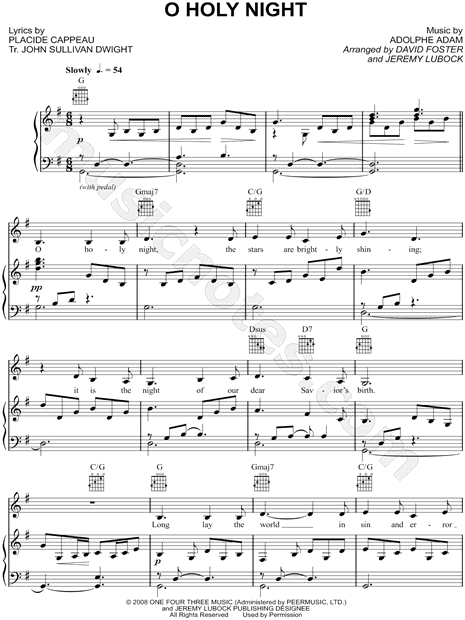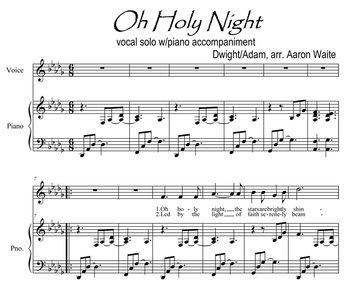O Holy Night Free Sheet Music Violin
Now for the piano arrangement. It is the flowing chords that give the O Holy Night sheet music its special flavor. Never having found a version easy enough for my students but also lovely enough to want to play and work hard on, or even with which to accompany singers, I finally arranged my own version.

The chord pattern is different from the lilting chord inversion pattern usually heard with piano arrangements of O Holy Night, but my pattern frees the right hand to play the melody. Here below are shown pages 1 & 3 of the O Holy Night sheet music, and now I am going to offer you a little music theory help, free! The essentials of music theory are much more fun when you are discovering them in a real honest-to-goodness song, rather than in a workbook. O Holy Night has all the chords belonging to the key; the I, ii, iii, IV, V and V7 both, and the vi chords.

Oh Holy Night (15 Free Arrangements). Violin Oh Holy Night. Get an original sheet music/lyrics/related scriptures for Oh Holy Night. O Holy Night sheet music for Violin - 8notes.com.
(In addition, we will encounter the V7 chord of the iii chord in the chord progression B7 to Em, which is explained as 'borrowing' a chord from another key, the key of E minor, to temporarily give us the feeling of being in that minor key.) If kids are somewhat familiar with playing chords in inversions, then they may be ready for this song. When I start O Holy Night sheet music with my younger students, it is always in the key of C. Torrent Michael Franti The Sound Of Sunshine on this page. I have them read and play the first left-hand chord, then tell me its name (C). Even though it seems like that should be pretty obvious, the doubling of the C at the octave can cause confusion, especially if they haven't played the chord built in that manner, and kids are sometimes cautious about advancing an opinion about a chord if it shows up in unfamiliar guise! Then they play along for a few measures, right into the F/C chord, usually without noticing that the chord has changed!
I may take the point of my pencil and direct their attention to the 'f' after the 'c' in measure 4. When I ask them to analyze this chord, I may have to say 'Look for the interval of a 4th. Driver Samsung Scx 4521f Windows 7 32bit. The note at the top of the 4th is the name of the chord' -- or perhaps I will make the chord myself, an octave higher, then point out the 3 notes of the F chord in root position. They always recognize chords in root position.
This slash chord, the F over C, is so beautiful that we usually start over so we can experience it again without hesitation (or so much hesitation, at least!). The left hand then moves back into the C chord for a couple measures, and then the hand drops to a Maryland License Renewal Grace Period. 'g' -- most kids will start immediately to form a G chord, so I give them a warning to read carefully -- 'It looks like it might be a G chord, but is it?'
Having just made the F/C slash chord, they are more wary, and usually recognize quickly that it is really a C chord -- a C over G, written 'C/G'. As we move along in the O Holy Night sheet music, we are writing the chord names at the top of each measure, right over the beat where each chord begins (not centered over the measure, which some kids are tempted to do). In the next measure, the hand stays where it is, but changes to a G7 chord. It is pretty easy to read those intervals of 3rds. We count up from the bottom just to confirm that the top note, 'f,' is indeed 7 steps up from the bass note 'g'. Then where do we go after a G7 chord? Most of my students know -- the G7 chord (or V7 chord) always makes us feel like 'going home' to the main chord (tonic chord), C!